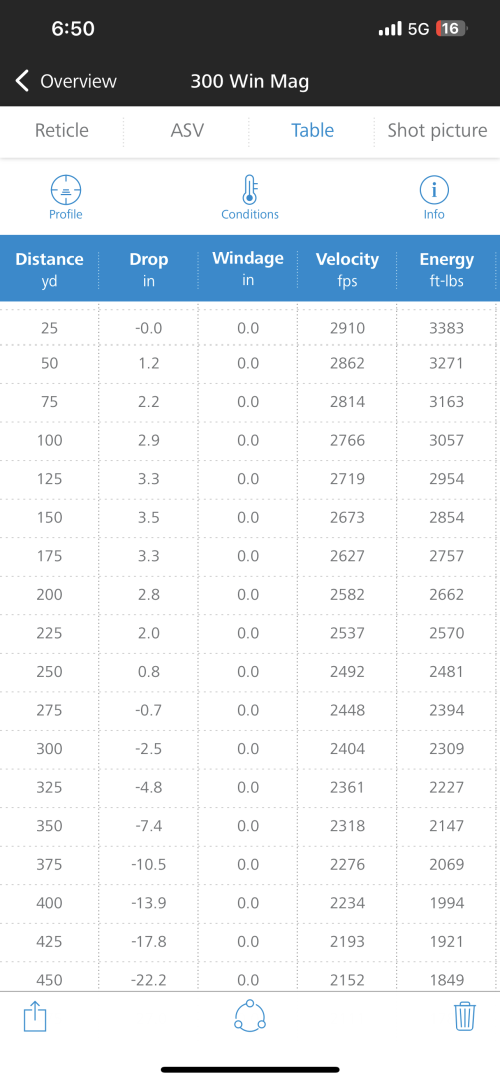220yotekiller
Well-known member
- Joined
- Oct 15, 2017
- Messages
- 773
I love a good caliber debate as much as anyone else on here and I have shot/been witness to enough elk being shot with a number of different ranges with a number of different calibers, from the lowly 243 Winchester to the bone crushing 338 Titan. Care to know what the ending result was? They were all dead, some took more than one round, some went some distance before we tracked them to where they died, but they were all dead. Most of these were shot with scopes that couldn't dial so that meant holdover either with a regular reticle or with a ballistic reticle, so that meant that you had to know what your point blank range was. So I did a bit of research on elk calibers/loads going from 100 to 500 yards. This is just drop data using Nosler data and the Hornady ballistic calculator, it gives no energy figures.
270 Winchester 3000fps 130gr Accubond
+2.9 +3.4 0.0 -7.2 -18.3
7mm 08 Remington 2800fps 150gr Accubond
+3.4 +3.9 0.0 -8.4 -21.2
7mm Rem Mag 3050fps 160gr Accubond
+2.7 +3.3 0.0 -7 -17.7
308 Winchester 2800 165gr Accubond
+3.4 +3.9 0.0 -8.4 -21.2
30-06 Springfield 2775fps 180gr Accubond
+3.5 +4 0.0 -8.5 -21.6
300 Win Mag 2900fps 200gr Accubond
+3.1 +4.3 0.0 -9 -19.7
338 Win Mag 2700fps 250gr Accubond
+3.8 +4.3 0.0 -9 -22.9
375 H and H 2700fps 260gr Accubond
+3.8 +4.3 0.o -9 -22.9
I know I didn't do any of the RUM's or Weatherby rounds (there just wasn't time) but if you look at the data, there really isn't a ton of difference between the 7mm Rem Mag and the 338 Winchester/375 H and H duo (2") at 400 yards. So in reality if you buy pretty much any good center fire caliber, get a good quality scope on it, zero it at 300, and practice; you will be good out to pretty much any reasonable hunting range.
270 Winchester 3000fps 130gr Accubond
+2.9 +3.4 0.0 -7.2 -18.3
7mm 08 Remington 2800fps 150gr Accubond
+3.4 +3.9 0.0 -8.4 -21.2
7mm Rem Mag 3050fps 160gr Accubond
+2.7 +3.3 0.0 -7 -17.7
308 Winchester 2800 165gr Accubond
+3.4 +3.9 0.0 -8.4 -21.2
30-06 Springfield 2775fps 180gr Accubond
+3.5 +4 0.0 -8.5 -21.6
300 Win Mag 2900fps 200gr Accubond
+3.1 +4.3 0.0 -9 -19.7
338 Win Mag 2700fps 250gr Accubond
+3.8 +4.3 0.0 -9 -22.9
375 H and H 2700fps 260gr Accubond
+3.8 +4.3 0.o -9 -22.9
I know I didn't do any of the RUM's or Weatherby rounds (there just wasn't time) but if you look at the data, there really isn't a ton of difference between the 7mm Rem Mag and the 338 Winchester/375 H and H duo (2") at 400 yards. So in reality if you buy pretty much any good center fire caliber, get a good quality scope on it, zero it at 300, and practice; you will be good out to pretty much any reasonable hunting range.





